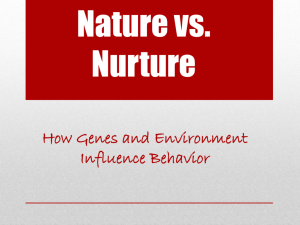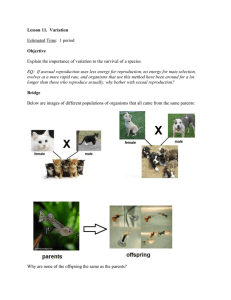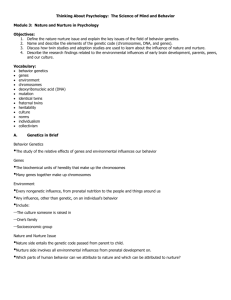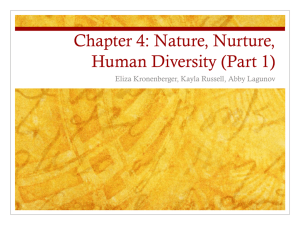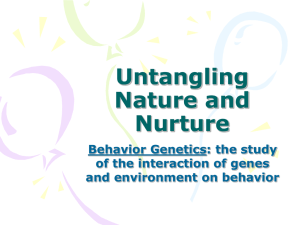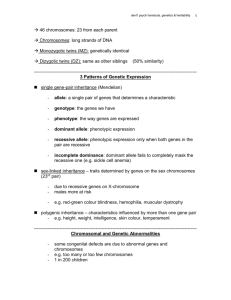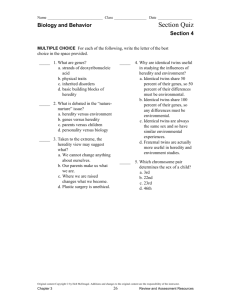Human Development Fall 2011 Daily Questions Genetic Bases of
advertisement
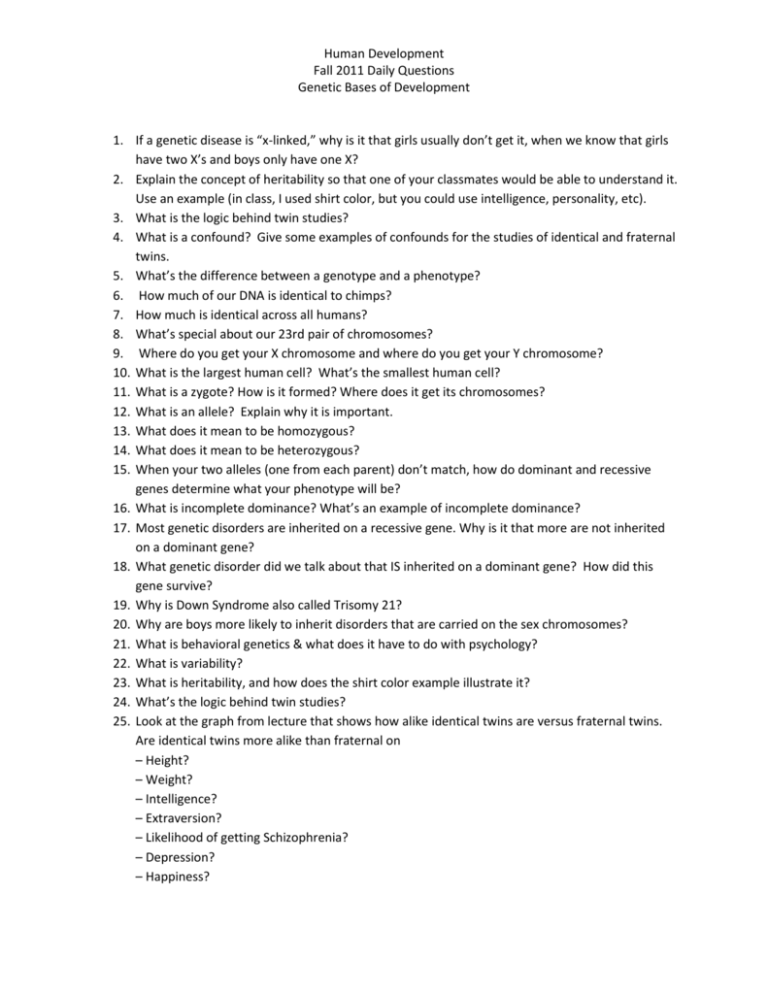
Human Development Fall 2011 Daily Questions Genetic Bases of Development 1. If a genetic disease is “x-linked,” why is it that girls usually don’t get it, when we know that girls have two X’s and boys only have one X? 2. Explain the concept of heritability so that one of your classmates would be able to understand it. Use an example (in class, I used shirt color, but you could use intelligence, personality, etc). 3. What is the logic behind twin studies? 4. What is a confound? Give some examples of confounds for the studies of identical and fraternal twins. 5. What’s the difference between a genotype and a phenotype? 6. How much of our DNA is identical to chimps? 7. How much is identical across all humans? 8. What’s special about our 23rd pair of chromosomes? 9. Where do you get your X chromosome and where do you get your Y chromosome? 10. What is the largest human cell? What’s the smallest human cell? 11. What is a zygote? How is it formed? Where does it get its chromosomes? 12. What is an allele? Explain why it is important. 13. What does it mean to be homozygous? 14. What does it mean to be heterozygous? 15. When your two alleles (one from each parent) don’t match, how do dominant and recessive genes determine what your phenotype will be? 16. What is incomplete dominance? What’s an example of incomplete dominance? 17. Most genetic disorders are inherited on a recessive gene. Why is it that more are not inherited on a dominant gene? 18. What genetic disorder did we talk about that IS inherited on a dominant gene? How did this gene survive? 19. Why is Down Syndrome also called Trisomy 21? 20. Why are boys more likely to inherit disorders that are carried on the sex chromosomes? 21. What is behavioral genetics & what does it have to do with psychology? 22. What is variability? 23. What is heritability, and how does the shirt color example illustrate it? 24. What’s the logic behind twin studies? 25. Look at the graph from lecture that shows how alike identical twins are versus fraternal twins. Are identical twins more alike than fraternal on – Height? – Weight? – Intelligence? – Extraversion? – Likelihood of getting Schizophrenia? – Depression? – Happiness? Human Development Fall 2011 Daily Questions Genetic Bases of Development 26. What does this say about the heritability of each of these traits? 27. What is a confound? What’s a possible confound in twin studies (the ones where identical twins are separated at birth)? 28. What’s the logic behind adoption studies? How do they tell us about the relative influences of genes and environment? 29. Explain the “range of reaction” graph. 30. How do researchers sometimes estimate the effects of the environment? How might this be an overestimate of the effect of genes? 31. How might genes and environment interact so that their combined effect is greater than their separate effects? – Give a couple of examples of this 32. What is epigenetics?
